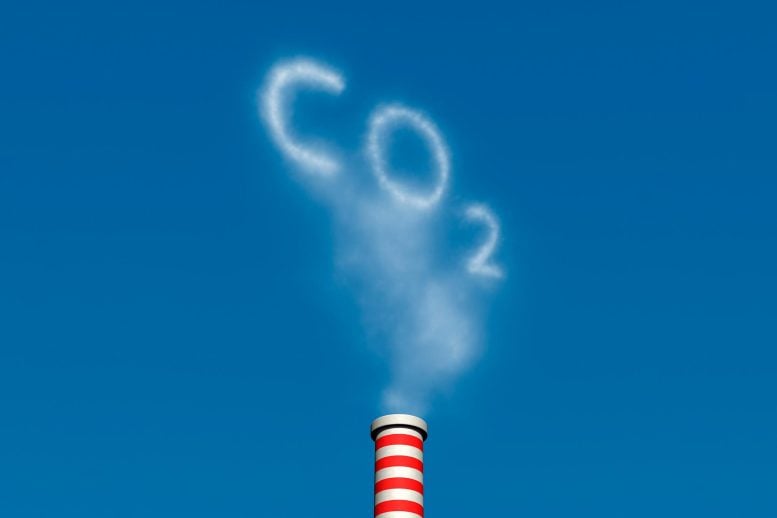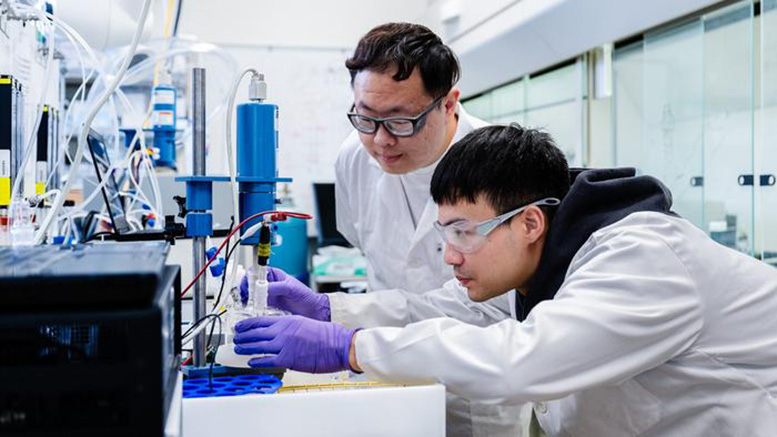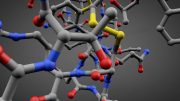
Researchers have developed a tin-based catalyst that efficiently converts CO2 into key chemicals like ethanol and acetic acid using electrocatalytic conversion, with potential applications in reducing greenhouse gas emissions by utilizing renewable energy sources.
A low-cost, tin-based catalyst can selectively convert carbon dioxide to three widely produced chemicals — ethanol, acetic acid, and formic acid.
Lurking within the emissions from many industrial operations is an untapped resource — carbon dioxide (CO2). A contributor of greenhouse gas and global warming, it could instead be captured and converted to value-added chemicals.
In a collaborative project involving the U.S. Department of Energy’s (DOE) Argonne National Laboratory, Northern Illinois University, and Valparaiso University, scientists report a family of catalysts that efficiently converts CO2 into ethanol, acetic acid, or formic acid. These liquid hydrocarbons are among the most produced chemicals in the U.S. and are found in many commercial products. For example, ethanol is a key ingredient in numerous household products and an additive to nearly all U.S. gasoline.
Electrocatalytic Conversion Method
The method used by the team is called electrocatalytic conversion, meaning that CO2 conversion over a catalyst is driven by electricity. By varying the size of tin used from single atoms to ultrasmall clusters and also to larger nano-crystallites, the team could control the CO2 conversion to acetic acid, ethanol, and formic acid, respectively. Selectivity for each of these chemicals was 90% or higher. “Our finding of a changing reaction path by the catalyst size is unprecedented,” Liu said.
Computational and experimental studies revealed several insights into the reaction mechanisms forming the three hydrocarbons. One important insight was that the reaction path completely changes when the ordinary water used in the conversion is switched to deuterated water (deuterium is an isotope of hydrogen). This phenomenon is known as the kinetic isotope effect. It has never been previously observed in CO2 conversion.

Researchers experimenting with tin-based catalysts that efficiently convert CO2 into ethanol, acetic acid or formic acid. Shown in image are Argonne researchers Haozhe Zhang and Jianxin Wang. Credit: Argonne National Laboratory
This research benefited from two DOE Office of Science user facilities at Argonne — the Advanced Photon Source (APS) and Center for Nanoscale Materials (CNM). “Using the hard X-ray beams available at the APS, we captured the chemical and electronic structures of the tin-based catalysts with different tin loadings,” said Chengjun Sun, an Argonne physicist. In addition, the high spatial resolution possible with a transmission electron microscope at CNM directly imaged the arrangement of tin atoms, from single atoms to small clusters, with the different catalyst loadings.
According to Liu, “Our ultimate goal is to use locally generated electricity from wind and solar to produce desired chemicals for local consumption.”
This would require integrating the newly discovered catalysts into a low-temperature electrolyzer to carry out the CO2 conversion with electricity supplied by renewable energy. Low-temperature electrolyzers can operate at near ambient temperature and pressure. This allows rapid start and stop to accommodate the intermittent supply of renewable energy. It is an ideal technology to serve this purpose.
“If we can selectively produce only the chemicals in need near the site, we can help to cut down on CO2 transport and storage costs,” Liu noted. “It would truly be a win-win situation for local adopters of our technology.”
Reference: “Modulating CO2 Electrocatalytic Conversion to the Organics Pathway by the Catalytic Site Dimension” by Haiping Xu, Jianxin Wang, Haiying He, Inhui Hwang, Yuzi Liu, Chengjun Sun, Haozhe Zhang, Tao Li, John V. Muntean, Tao Xu and Di-Jia Liu, 4 April 2024, Journal of the American Chemical Society.
DOI: 10.1021/jacs.3c12722
Support for the research came from DOE’s Office of Energy Efficiency and Renewable Energy under the Advanced Manufacturing Office, Industrial Efficiency & Decarbonization Office. Additional support was provided by Argonne’s Laboratory Directed Research and Development fund.









Excellent info.. Wow🙋
BVGCFDESWAQ NBVGCFDRESW MNBHGYFTR NBVGCFDEDW NBVGCFDESW NBHGVFCDXSS BVCFXDSAA.
This is all nonsense. CO2 has no useful energy content, and using electrical energy to convert it to useful molecules is very wasteful. Maybe in some far-distant future, where the grid is 100% renewable, including new demand for EVs and Heat Pumps, we can start to think about using excess electric power generation capacity for pipe dreams like DAC and CO2-to-chemicals, but until then, our best use of that electricity is to replace coal and gas on the grid.
If this carbon tech gets up,the process can make the CO2 a renewable resource
This is a way to draw down CO2 that skips the exhaust separation and liquefaction bits; grid connection well deferred, agrivoltaic applications well served.
But carbon dioxide already IS a useful chemical. It’s useful to plants… and consequently to all of us.
CO2 is a valuable chemical. We need it. Everyone says they love oxygen they love plants and photosynthesis, and everyone likes to eat and breath, but everyone bagged carbon dioxide. Carbon dioxide is the source of all the carbon we eat and all the glucose we use for cellular respiration. If there were no carbon dioxide we would all suffocate and starve. Also, we are in a temporary interglacial period in a multi million year ice age. If the glacial period returns billions of people will starve. We need to put multiple times the current atmospheric concentration of co2 into the air in order to prevent that from occurring. To not do so is a far greater threat to biodiversity, to our ability to continue to feed our population, and to the continued existence of human civilization as we know it. This is the real climate change we should fear, not global warming. Plant photosynthesis Will scrub the CO2 from the air eventually turning it into biomass regardless how much we release but the opposite, not putting enough there and allowing the reglaciation if the earth too take place as it naturally will, is far more serious threat to the humanity and to the current biosphere as a whole.
I’m not a scientist but someone said we need to put more C02 into the air but with all the Deforestation happening there won’t be enough trees to balance all this out and the Heat from all this is the thing that will kill the eart
It’s ALL an artefact of overpopulation.
There are no technologies that can take enough CO2 from the atmosphere to affect the Earth’s climate. Just one part-per-million of CO2 represents 7.8 billion metric tons and these expensive and energy intensive schemes are taking out CO2 in the millions…not billions. Carbon capture has all the earmarks of a scam if climate mitigation is the goal.
Is it a tree?
When will someone PLEASE state that CO is the problem, NOT CO2! We learned that in primary school, geezuz… Btw, you know every living mammal exhales CO2, thus providing plants so they supply US with Oxygen?